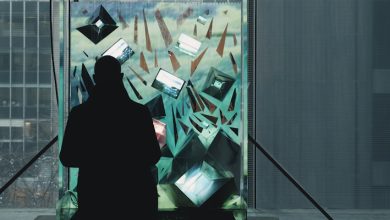Future Trends in the NFT Market

- Introduction to NFTs and their growing popularity
- Key factors driving the expansion of the NFT market
- The rise of digital art and collectibles in the NFT space
- Challenges and opportunities for NFTs in the mainstream market
- Exploring the potential impact of blockchain technology on NFTs
- Predictions for the future of the NFT market
Introduction to NFTs and their growing popularity
NFTs, or non-fungible tokens, have been gaining significant traction in recent years as a digital asset class. These unique tokens represent ownership or proof of authenticity of a digital asset, whether it be art, music, videos, or even virtual real estate. NFTs are built on blockchain technology, making them secure and transparent.
One of the main reasons for the growing popularity of NFTs is the ability to provide creators with a new way to monetize their work. Artists, musicians, and other content creators can tokenize their creations as NFTs and sell them directly to collectors, eliminating the need for intermediaries. This direct connection between creators and consumers has revolutionized the way digital assets are bought and sold.
Furthermore, NFTs have opened up new opportunities for collectors and investors to participate in the digital art market. With the rise of online marketplaces dedicated to NFTs, such as OpenSea and Rarible, anyone can buy and sell digital assets with ease. This accessibility has democratized the art world, allowing a wider audience to invest in and own digital art.
Key factors driving the expansion of the NFT market
There are several key factors contributing to the rapid expansion of the NFT market. One of the main drivers is the growing interest from both artists and collectors in leveraging blockchain technology to authenticate and trade digital assets. This technology provides a secure and transparent way to verify ownership and provenance, which has significantly increased trust in the market.
Another important factor is the rise of online marketplaces and platforms dedicated to NFTs, making it easier for creators to mint, list, and sell their digital creations. These platforms have democratized the process, allowing artists of all kinds to participate in the market and reach a global audience.
Additionally, the increasing acceptance of cryptocurrencies as a form of payment has played a significant role in driving the expansion of the NFT market. Many buyers and sellers prefer using cryptocurrencies for their transactions due to lower fees, faster processing times, and the ability to remain anonymous.
Furthermore, the buzz and hype surrounding NFTs in the media and popular culture have also fueled the market’s growth. Celebrities, brands, and even traditional art institutions are getting involved in the space, bringing more attention and legitimacy to the concept of owning digital assets.
Overall, these factors combined have created a perfect storm for the NFT market to thrive and continue expanding in the foreseeable future. As more people become familiar with NFTs and their potential, the market is expected to further diversify and mature, opening up new opportunities for creators, collectors, and investors alike.
The rise of digital art and collectibles in the NFT space
The rise of digital art and collectibles in the NFT space has been a significant trend in the market. Artists and creators are increasingly turning to NFTs as a way to showcase and sell their work in a unique and secure manner.
**Digital art** has become a popular form of expression, with artists leveraging blockchain technology to create one-of-a-kind pieces that can be tokenized and sold as NFTs. This has opened up new opportunities for artists to reach a global audience and monetize their creations in a way that was not possible before.
**Collectibles**, such as virtual trading cards, limited edition items, and virtual real estate, have also seen a surge in popularity within the NFT space. Collectors are drawn to the idea of owning rare and exclusive digital assets that can be bought, sold, and traded on various NFT marketplaces.
As the NFT market continues to evolve, we can expect to see even more innovative uses of the technology in the realm of digital art and collectibles. From virtual fashion to interactive experiences, the possibilities are endless for creators and collectors alike. The future of the NFT market is bright, and digital art and collectibles are sure to play a key role in shaping its growth and development.
Challenges and opportunities for NFTs in the mainstream market
NFTs have been gaining popularity in recent years, with more artists, creators, and investors exploring the potential of this digital asset. As NFTs move towards the mainstream market, there are both challenges and opportunities that need to be considered.
- **Challenges**:
- 1. **Lack of awareness**: Many people are still unfamiliar with NFTs and how they work, which can hinder their adoption in the mainstream market.
- 2. **High barriers to entry**: The complexity of buying, selling, and storing NFTs can be a barrier for newcomers who are not tech-savvy.
- 3. **Legal and regulatory concerns**: The legal status of NFTs is still uncertain in many jurisdictions, which can create challenges for mainstream acceptance.
- **Opportunities**:
- 1. **Increased exposure**: As more mainstream platforms start to support NFTs, they will reach a wider audience and gain more recognition.
- 2. **Integration with existing industries**: NFTs have the potential to revolutionize industries such as art, gaming, and collectibles, opening up new opportunities for creators and investors.
- 3. **Innovative use cases**: The flexibility of NFTs allows for unique applications in areas like virtual real estate, ticketing, and identity verification, creating new markets and revenue streams.
Overall, the challenges and opportunities for NFTs in the mainstream market are closely intertwined. While there are obstacles to overcome, the potential for growth and innovation in this space is vast. As more people become familiar with NFTs and their benefits, we can expect to see continued expansion and evolution in the market.
Exploring the potential impact of blockchain technology on NFTs
Blockchain technology has the potential to revolutionize the NFT market by providing enhanced security, transparency, and decentralization. By utilizing blockchain, NFTs can be securely stored and verified, reducing the risk of fraud and counterfeiting. The transparent nature of blockchain allows for the provenance of NFTs to be easily traced, providing buyers with confidence in the authenticity of their digital assets. Additionally, blockchain’s decentralized nature removes the need for intermediaries, reducing costs and increasing accessibility to the NFT market for a wider range of participants.
Furthermore, blockchain technology can enable smart contracts to be integrated into NFT transactions, automating the process of royalties and ensuring that creators receive their fair share of profits whenever their NFTs are sold or exchanged. This feature not only benefits creators but also adds value to NFTs as an investment asset, attracting more investors to the market.
Overall, the integration of blockchain technology into the NFT market has the potential to significantly impact the way NFTs are bought, sold, and traded. As the technology continues to evolve and improve, we can expect to see even more innovative applications and benefits for NFTs in the future.
Predictions for the future of the NFT market
The future of the NFT market is full of exciting possibilities and potential for growth. As technology continues to advance, we can expect to see a surge in the popularity of NFTs across various industries. Here are some predictions for what the future holds for the NFT market:
- Increased mainstream adoption: NFTs are already gaining traction in the art world, but we can expect to see them being used in other sectors such as gaming, real estate, and even education. This broader adoption will lead to a more diverse range of NFT offerings and increased interest from both creators and buyers.
- Enhanced security measures: With the rise in NFT transactions, there will be a greater focus on improving security measures to protect both buyers and sellers. This will help build trust within the market and encourage more people to participate in NFT exchanges.
- Interoperability between platforms: Currently, NFTs are mostly confined to specific marketplaces or platforms. In the future, we can expect to see increased interoperability between different platforms, allowing for easier trading and transferring of NFTs across various ecosystems.
- Regulatory developments: As the NFT market continues to grow, we can anticipate increased regulatory oversight to ensure compliance with existing laws. This will help legitimize the market and provide a safer environment for all participants.
- Innovations in NFT technology: With advancements in blockchain technology, we can expect to see new and innovative ways of creating and selling NFTs. This could include improvements in scalability, reduced energy consumption, and enhanced functionality for both creators and collectors.
Overall, the future of the NFT market looks promising, with plenty of opportunities for growth and development. As more people become familiar with NFTs and their potential uses, we can expect to see continued innovation and expansion in this exciting space.




